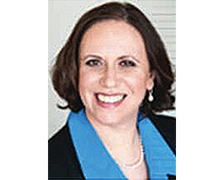NAVIGATING THE OBSTACLES FOR ELIMINATING UNCONSCIOUS BIAS
Lesley Sigall oversees the business operations and finance functions of Computer Sciences Corporations’ Global Infrastructure Services unit. With an impressive career trajectory and a passion for diversity and inclusion, Sigall is recognized as an outstanding leader with excellent global collaboration skills. She brings together cross-country and cross-disciplinary teams to solve difficult problems and deliver results.
Before joining the global IT services innovations leader last year, she spent nine years at Credit Suisse, serving in a variety of IT management positions that culminated as managing director and COO for the company’s Technology Infrastructure and Corporate Real Estate & Services. She spent the 13 previous years at Marsh & McLennan, rising through the ranks of IT Finance, with her final position there as IT CFO.
Sigall uses her vast experience mentoring young women and driving awareness of D&I. While at Credit Suisse, she was the sponsor for the Diversity & Inclusion Committee for IT Americas, helping shape D&I programs and collaborate with other committees across the bank. Within a year at CSC, she leads business operations for the combined Global Delivery & Operations function for the combined CSC and HP ES organizations and she is active in global webinars on unconscious bias and diversity initiatives.
In the words of Lesley Sigall:
Where do you see women in STEM in five years?
“In five years, I see women in STEM continuing to progress, but still facing many of the same barriers and issues that they face today. I believe that corporations will continue to sharpen their focus on diversity, as they recognize that their bottom lines are negatively impacted by a lack of diversity.”
What barriers are in the way to closing the gender gap in STEM?
“First and foremost, the unconscious bias that leads to self-selection out of STEM and suboptimal hiring decisions. There are, however, other societal biases that erect barriers to closing the gender gap. Structural barriers exist in terms of household work. Women are still expected to shoulder a greater proportion of household work and penalized for it at work, as people judge women to be less committed to their careers when they ask for flexible time or need to be out for child care. The lack of women at higher levels of management in STEM also presents a barrier to increased diversity. This deficit can cause women to be overlooked during hiring or promotion discussions.”
What can be done to move women forward in STEM?
“In the short-term, women must be represented on hiring and promotion panels, and these panels need training to root out unconscious bias. In the long-term, companies should continue to sponsor events in schools to help girls maintain interest in STEM and believe in themselves.”







